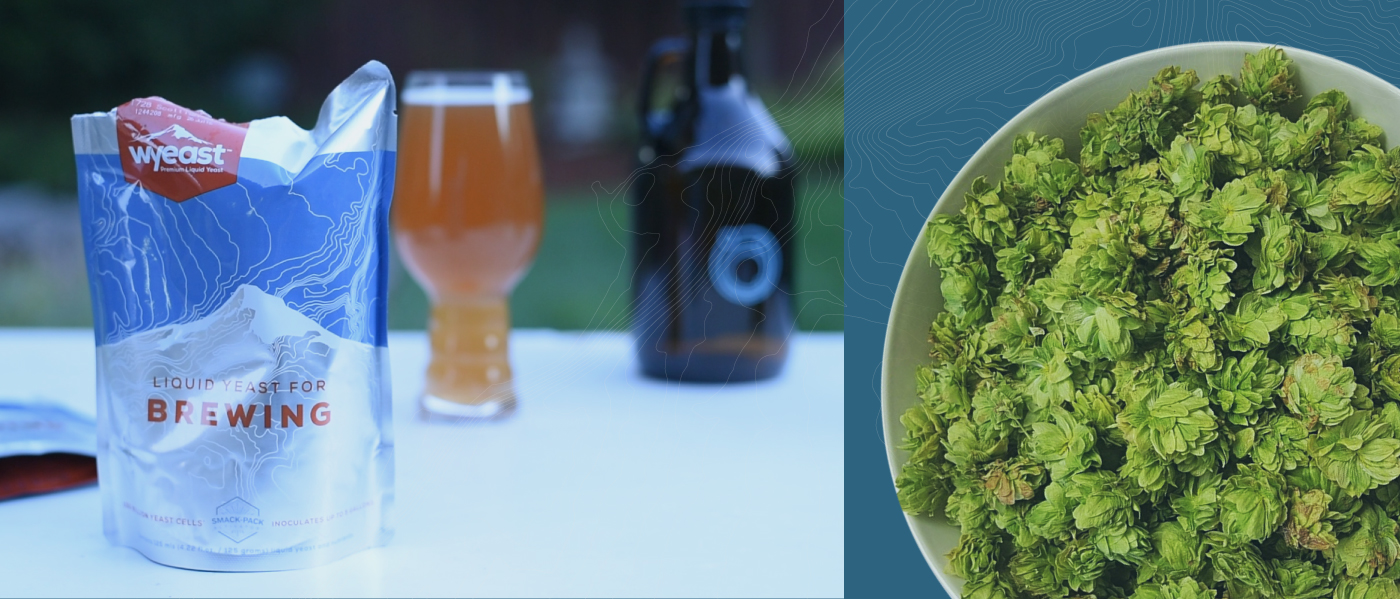Balancing a Hop Forward Lager

Our latest fall Private Collection: Flannel Fest is curated for inspiring fresh interpretations of some of our favorite seasonal styles. If you are new to using fresh hops, dry hopping, or looking to improve your understanding of balancing bitterness in your recipes, Wyeast’s Technical Product Support Manager and Professional Brewer, Fausto Yu-Shan, explains how to improve balance and avoid unwanted off-flavors.
Balancing the Bitter:Sweet Ratio
When brewing a traditional lager beer, it is important to consider the balance of the beer’s bitter:sweet ratio from the beginning, and how to improve it. This is especially true if you are preparing to use fresh hops in your next lager this season. Beers with forward or aggressively hopped profiles should still be crafted to produce a balanced and overall satisfying experience.
The same consideration applies to brewing styles like schwarzbier, porter, and stout, in which darker malts are used and produce more bitterness. Having a higher relation of bitterness compared to the beer’s sweetness requires the brewer to neutralize the roasted flavor in the recipe. Likewise, the final gravity needs to be considered because residual sugars can be left adding sweetness to the beer. When dry hopping or adding fruit puree, the bitter:sweet relationship can sway the profile one way or the other.
To calculate the bitter:sweet ratio, divide the IBU units by the density as for example in a lager beer:
IBU: 25
Original Gravity: 1.048 (12.0 °P)
25 ÷ 48 = 0.52
This example portrays a well-balanced beer. Beers with a calculation closer to 1.0 will contain a higher bitterness; and in the same way if the result is closer to 0.0 the sweet or malty flavor will be most noticeable. Beer styles that lean towards greater bitterness and greater maltiness are shown in the examples below:
American IPA
IBU: 51
Original Gravity: 1.059 (14.4 °P)
51 ÷ 59 = 0.86
This example shows a more bitter taste.
American Light Lager
IBU: 12
Original Gravity: 1.044 (11.0 °P)
12 ÷ 44 = 0.27
This example will be more malty and sweeter.
Additional Considerations
Many studies indicate that lager yeast strains produce higher levels of hydrogen sulfide (H2S) than ale yeast strains. When selecting a lager strain for your next brew, this matter should be considered because some hop varietals are well known to contribute to higher H2S levels during fermentation of lager beers. This happens when sulfur is sprayed on the hop plants during growing to control the fungus microorganism Pseudoperonospora humuli, known as mildew. Even after several cleaning procedures it leaves behind some residues that contribute to H2S production during fermentation.
The most common sulfur compounds found in hop oils that influence the beer flavor are thioesters which are regulated by variety and growing conditions. In some cases S-methyl-2-methylthiobutanoate thioester has been found in considerable concentrations in final beer product or in dry hopped beers. Research has also shown that fermentations with lager yeast plus hopped wort produced higher levels of H2S than unhopped wort.
However, hydrogen sulfide shouldn’t deter you from trying new hops or dry hopping in your lager. To remove the presence of H2S during fermentation it is necessary to have vigorous fermentations in which the CO2 will scrub the off-flavor. This is accomplished by pitching the correct amount of yeast for the gravity and volume of the wort, following the recommended fermentation conditions for the chosen yeast, and using a yeast nutrient to ensure a healthy and complete fermentation by the yeast.
More Lager Brewing Resources:
Home Enthusiast:
Home Enthusiast – Lager Brewing
Home Enthusiast – Yeast Fermentation
Professional Brewers:
Professional – Yeast Fermentation
– Fausto Yu-Shan
Technical Product Support Manager
Professional Brewer
